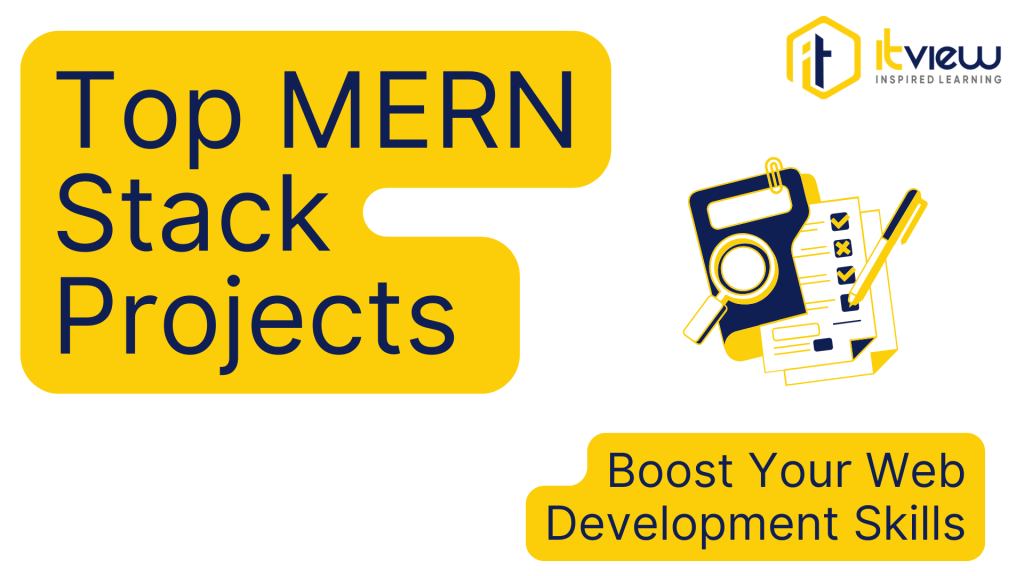Mastering the MERN stack (MongoDB, Express.js, React, and Node.js) isn’t just about knowing the tools, it’s about building things that solve real problems.
This guide offers 5 practical, real-life MERN stack project ideas, complete with source code links, real-world use cases, and brief build guides so you can practice effectively and upgrade your developer portfolio.
Whether you’re self-learning or enrolled in a full stack developer course, these projects will help you gain hands-on experience that mirrors actual industry work.
1. Personal Expense Tracker
Real-Life Use Case:
Every individual or household needs to track spending habits. Many people use apps like Mint or YNAB to log income and expenses. This project mimics that functionality.
User Scenario: A working professional wants to track monthly expenses (groceries, rent, transport) and monitor how much is spent vs. earned.
Key Features:
- Add/delete income & expenses
- Categorize transactions
- Display balance, income, and expense breakdown
- Authentication to secure data
How to Build (In Brief):
- Frontend (React): Use form components for data entry, state hooks to store input, and charts (e.g., Chart.js) to visualize expenses.
- Backend (Node + Express): Create RESTful APIs to store and fetch transactions.
- Database (MongoDB): Store each user’s financial data, categorized by type.
- Auth: Use JWT to secure routes and sessions.
GitHub Source Code: MERN Expense Tracker
2. E-Commerce Store (Mini Amazon)
Real-Life Use Case:
E-commerce platforms like Amazon, Flipkart, or Shopify have transformed how we shop. This project simulates a basic version of such a platform.
User Scenario: A user browses products, adds them to a cart, checks out using a payment gateway, and views order history.
Key Features:
- Product listing with images and prices
- Cart management
- User registration & login
- Admin dashboard to manage products
- Payment integration (e.g., PayPal or Stripe)
How to Build (In Brief):
- React + Redux: For UI components, cart logic, and user interactions.
- Express.js: Create RESTful routes for products, users, and orders.
- MongoDB: Store product info, user data, and order history.
- Payment Integration: Use PayPal or Stripe API for real transactions.
GitHub Source Code: Amazona Clone
3. Task Manager App with User Authentication
Real-Life Use Case:
Task management tools like Todoist or Trello help teams and individuals organize tasks, set deadlines, and track progress.
Key Features:
- Task creation, update, delete
- Authentication (JWT)
- Prioritization & deadline settings
- User-specific task list
This kind of hands-on project is often part of advanced IT courses in Pune with placement, as it helps learners understand core backend logic, database design, and frontend state management, all essential for real-world development.
How to Build (In Brief):
- Frontend (React): Use form inputs for tasks and filter components for priorities.
- Backend (Node.js + Express): Build endpoints to handle user login and CRUD operations for tasks.
- Database (MongoDB): Store tasks under user IDs.
- JWT Auth: Secure routes so users only see their tasks.
If you’re enrolled at an IT training institute in Pune, this kind of project will likely be a key part of your practical assignments, combining authentication, user-specific data handling, and RESTful API development to reflect real business needs.
GitHub Source Code: MERN To-Do App with Auth
4. Social Media App (Mini Instagram)
Real-Life Use Case:
Apps like Instagram or Twitter allow users to share content and engage socially. This MERN project focuses on that engagement model.
User Scenario: A student wants to create a photo-sharing app for college events where students can post, like, and comment on pictures.
Key Features:
- User login/register
- Post images (use Cloudinary for uploads)
- Like and comment functionality
- Follow/unfollow users
- Feed with posts from followed users
How to Build (In Brief):
- React Frontend: Use forms for posts and feed rendering with useEffect/useState.
- Node.js + Express API: RESTful routes for users, posts, and relationships.
- MongoDB: Store user profiles, posts, and comments.
- Image Uploads: Use Cloudinary API for secure image storage.
GitHub Source Code: Social Media App
5. Online Bookstore / Library App
Real-Life Use Case:
Libraries and bookstores now offer digital interfaces for book listings, lending, and review management.
User Scenario: A school wants a platform where students can borrow books, submit reviews, and suggest new titles.
Key Features:
- Book catalog with filters
- User login with role-based access (admin vs. student)
- Borrowing functionality
- Book suggestions and reviews
How to Build (In Brief):
- Frontend (React): Dynamic filters and book cards UI.
- Backend (Express): APIs for book management, borrowing logic, user access control.
- MongoDB: Maintain book inventory and user borrowing history.
- Admin Controls: Special dashboard to add/delete books or view analytics.
GitHub Source Code: MERN Library App
Final Thoughts: Learning by Building
Each of these projects isn’t just code, they reflect real-world business models you interact with every day. By building them, you:
- Reinforce full-stack concepts
- Understand user experience design
- Practice version control & deployment
- Create portfolio-ready apps to showcase your skills
For those exploring IT courses in Pune, working on such hands-on projects bridges the gap between theoretical learning and actual development experience, a crucial step in becoming industry-ready.
Pro Tips for Success:
- Add your own features: filters, dark mode, chat, or graphs
- Deploy your projects on Vercel, Netlify, or Render
- Use GitHub READMEs to explain your architecture
- Record a short walkthrough video for recruiters or clients
Ready to Build?
Pick one project from this list and get your hands dirty. You’ll not only learn the MERN stack deeply, but you’ll also create something that adds value to users and to your career. Need help getting started, want a personalized MERN learning roadmap, or looking to enroll in a course that supports practical development? Get in touch with us here, we’re happy to guide you.

